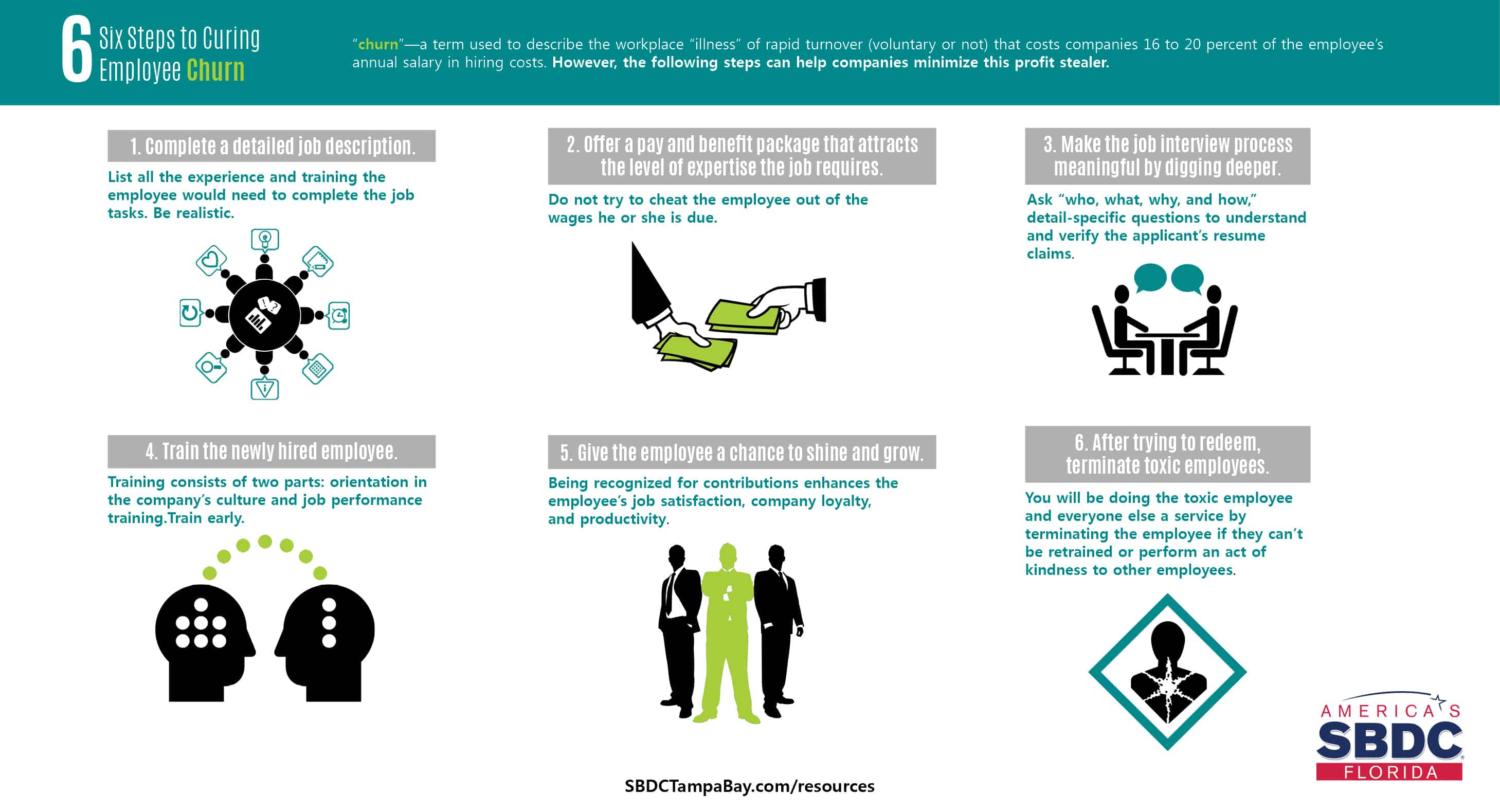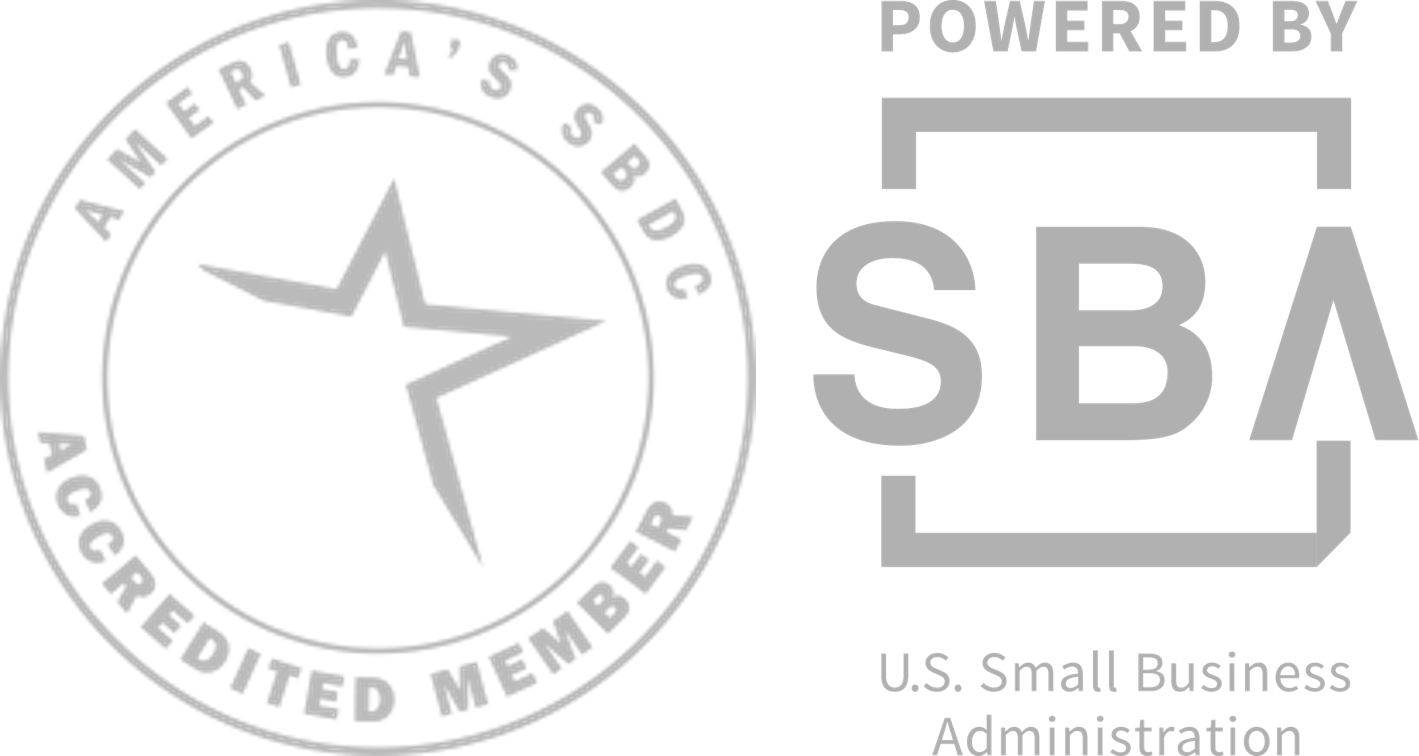Six Steps to Curing Employee Churn
by Linda Benedict
February 16, 2017
“I can’t find the right people to hire and even if I do, they don’t last more than a year or two!” the client groaned sitting across from my desk. “We pay the going rate but things have changed. Employees just aren’t loyal anymore!”
Unfortunately, the business owner was experiencing “churn”—a term used to describes the workplace “illness” of rapid turnover (voluntarily or not) that costs companies between 16 to 20 percent of the employee’s annual salary in hiring costs. However, the following steps can help companies minimize this profit stealer.
- Complete a detailed job description.
List all the experience and training the employee would need to complete the job’s tasks. Develop the job description using a team approach soliciting input from the immediate supervisor, human resource manager, and the owner/CEO. Many times I have seen owners try to formulate job descriptions in a vacuum. The result is disappointing. Be realistic, remembering that an employee is not a miracle worker and cannot fix all the organization’s problems. In addition, recognize that the new employee will need additional orientation and training to fully understand the company culture and the company’s specific internal procedures.
- Offer a pay and benefit package that attracts the level of expertise the job requires.
Today, some employers chalk up labor issues to modern social values or a generational defect; however, the struggle between how much an individual should gain while using another’s labor has been around since olden times. One ancient code allowed the ox, as it walked around a circle dragging the heavy grinding wheel that crushed the grain, to take as many mouthfuls of grain it wanted and most likely not only referred to the ox but to the laborer who was driving the ox. In other words, do not try to cheat the employee out of the wages he or she is due. While it will take more than a few mouthfuls of grain to satisfy today’s employee, the principle remains the same.
- Make the job interview process meaningful by digging deeper.
Too many managers use random interview questions or rely on gut feelings to choose between applicants. You can recognize those interviewers because at the beginning of the interview it is obvious they haven’t read the applicant’s cover letter or resume. Instead, ask “who, what, why, and how,” detail-specific questions to understand and verify the applicant’s resume claims.
- Train the newly hired employee.
Training consists of two parts: orientation in the company’s culture and job performance training. Each company, based on its mission and vision, has a specific understanding of its role in the marketplace and world. New employees need to undergo an early indoctrination process to become part of the company team. In addition, each company has certain operational procedures an employee must follow. Train early, before the new employee develops bad habits, and refresh periodically.
- Give the employee a chance to shine and grow.
In general, employees come into a job wanting to succeed and be part of the team. They bring with them talents and strengths from past experience that can enhance their value to the company. In turn, being recognized for contributions enhances the employee’s job satisfaction, company loyalty, and productivity. One company I worked with developed a financial reward system for employees who discovered process improvements. Another actively solicited employee suggestions to improve product development and rewarded employees with recognition, rewards, and promotions.
- After trying to redeem, terminate toxic employees.
We all have worked with an employee who, for whatever reason, has come to hate their job and the company. Their sole mission in life is to share their misery and are quite successful at it. If they can’t be retrained, perform an act of kindness to other employees and help the toxic employee move on. While employment termination is never pleasant, you will be doing the toxic employee and everyone else a service.
Although implementing these six steps isn’t a guarantee you won’t feel the pinch of a tight labor market, you will reap the benefit of a better employee search, an improved work environment, and enhance the bottom line. As employee satisfaction grows, so does employee loyalty and longevity, signaling an end to churn.





